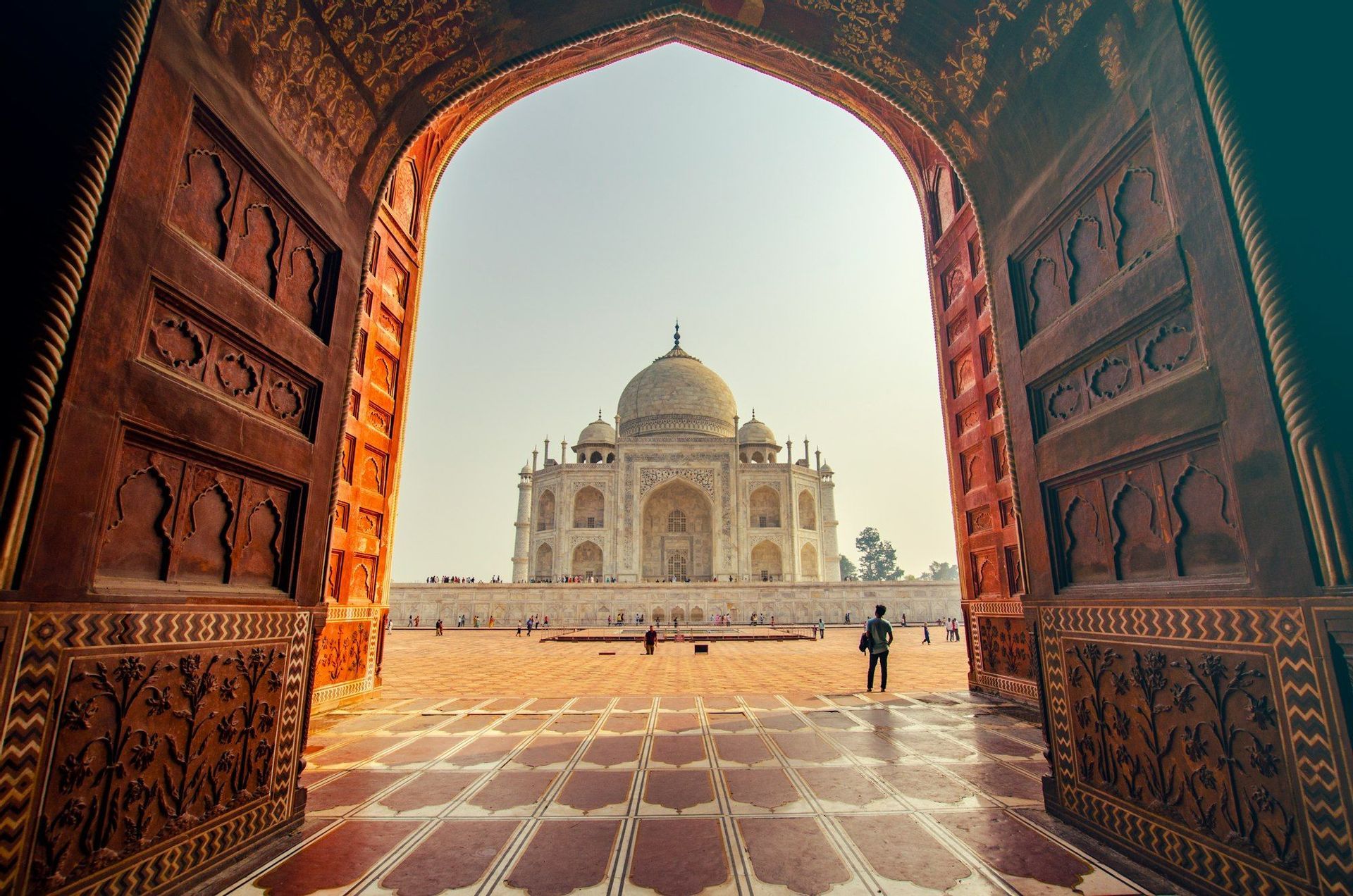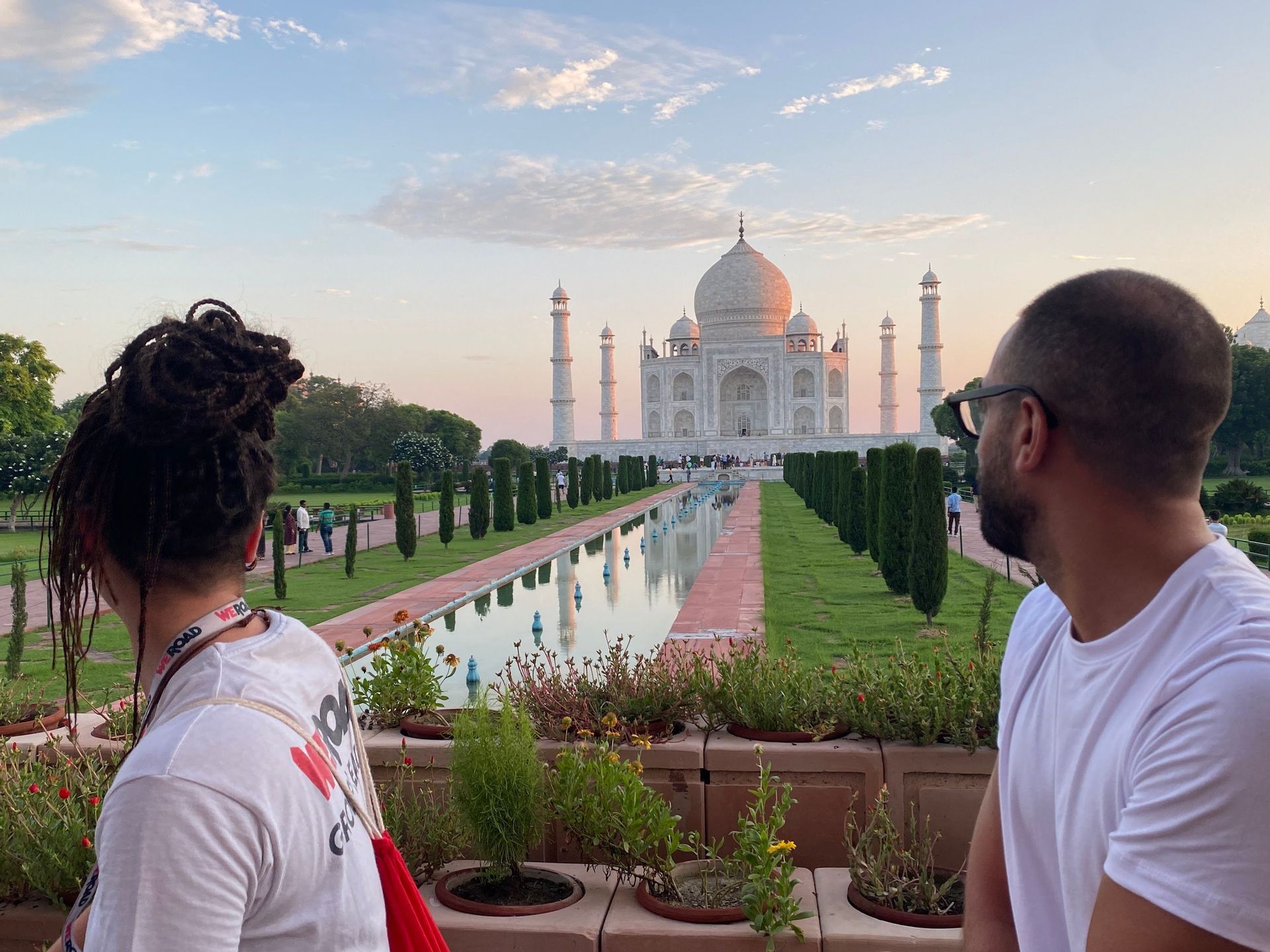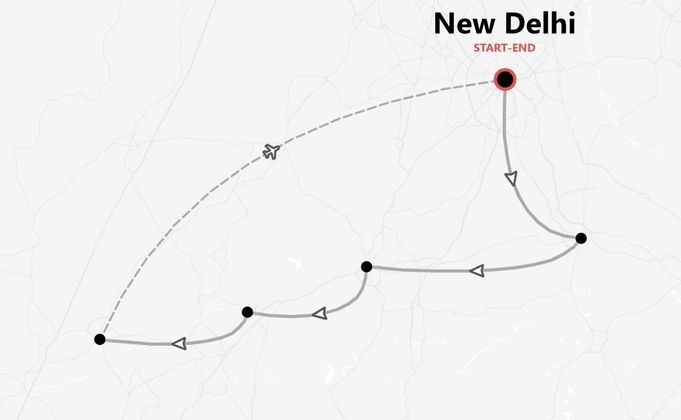
Group trips to India
Our organized trips to India
More than a country, India is an exhilarating spectrum of experiences, where ancient traditions gracefully meet a dynamic contemporary pulse. It's a land of profound spirituality and vibrant festivals, of breathtaking natural landscapes and captivating urban energy. From the ethereal majesty of the Taj Mahal, a testament to eternal love, to the soul-stirring rituals along Varanasi's sacred ghats, and the regal palaces of Jaipur, resplendent in their heritage, India invites travelers to dive into a sensory tapestry unlike any other. For the curious explorer and the seeker of unparalleled discovery, India promises an unforgettable journey that ignites every sense and spirit.
FAQs about India
If you are a UK citizen, to find out the entry requirements for India, you can check this informational page from our partner Sherpa. If you need a visa, you can apply for it through Sherpa. If you are not a UK citizen, you can still use Sherpa by changing the nationality in the 'Passport' section.
Before traveling, always remember to check the government website of your country of origin for updates on the entry requirements for India – you wouldn’t want to stay home due to a bureaucratic detail!
- UK residents: review the FCDO Travel Advice.
- US residents: consult the US Department of State Travel Advice.
- Other residents: refer to your government or local consulate's travel advice.
India is in the Indian Standard Time zone, which is GMT+5:30. India does not observe daylight saving time, so the time difference with the UK differs throughout the year.
The currency in India is the Indian Rupee (INR). You can exchange your money at:
- Banks
- Airports
- Currency exchange offices in major cities
It's a good idea to compare rates and fees to get the best deal.
In India, you can pay using cash, credit or debit cards, mobile wallets like Paytm or Google Pay, and UPI (Unified Payments Interface) apps. It's a good idea to have some cash on hand for small vendors or street markets, but cards and digital payments are widely accepted in cities and larger towns. Always check with your bank if your card will work in India and whether any fees apply.
Tipping is quite common in India, and it's appreciated even though not always mandatory. In restaurants, leaving a tip of around 5-10% of the bill is customary if a service charge isn't already included. For hotel staff, like porters or housekeeping, a small tip of 50-100 INR is a nice gesture. For taxi or rickshaw drivers, rounding up the fare is enough. Remember, tipping is seen as a way to show appreciation for good service, so feel free to tip more if you're especially satisfied.
India has a good internet infrastructure, especially in cities and tourist areas. Wi-Fi is common in hotels, cafes, and restaurants, but it can be slow or unreliable at times. If you want constant connectivity, we recommend getting a local SIM card. Major providers like Airtel, Jio, and Vodafone offer affordable data plans. You can buy a SIM at the airport or from mobile shops—just make sure your phone is unlocked. Do remember to bring your passport for registration.
In India, the main language spoken is Hindi, but there are 21 other officially recognised languages and hundreds of regional dialects. English is also widely used, especially in business and tourism. Here are some useful Hindi expressions you might hear or want to use:
- Hello: Namaste
- Thank you: Dhanyavaad
- Yes: Haan
- No: Nahi
- How much?: Kitna hua?
You'll find English is generally understood in larger cities and tourist areas.
In India, you'll find two types of sockets: Type C and Type D. Type C sockets have two round pins, while Type D sockets have three round pins in a triangular pattern. The standard voltage is 230V with a frequency of 50Hz. We recommend you bring a universal adapter to ensure your devices can be plugged in without any issues. This way, you're all set to keep your gadgets charged during your travels.
The main religion in India is Hinduism, which is practiced by the majority of the population. India is also home to many other religions, including Islam, Christianity, Sikhism, Buddhism, and Jainism.
If you're planning to visit, it's good to be aware of some major religious holidays like Diwali, the Festival of Lights celebrated by Hindus, or Eid, celebrated by Muslims. These are vibrant and significant times in India, often accompanied by festivals, rituals, and public gatherings.
Packing for India can be an exciting task given its diverse climate and culture. Here’s a handy list to help you prepare your backpack:
-
Clothing:
- Lightweight cotton shirts and pants
- Long skirts or dresses for women
- A light sweater or jacket for cooler evenings
- Scarf or shawl for visiting religious sites
-
Shoes:
- Comfortable walking shoes
- Sandals or flip-flops for ease and comfort
-
Accessories and Technology:
- Sunglasses and a wide-brimmed hat
- Universal travel adapter
- Portable charger
- Camera or smartphone with a good camera
-
Toiletries and Medication:
- Basic toiletries like toothbrush, toothpaste, and soap
- Sunscreen and insect repellent
- Hand sanitizer
- Common travel medication like motion sickness tablets, pain relievers, and anti-diarrheal pills
Remember to consider the local customs and climate of the specific region in India you’re visiting to ensure a comfortable and respectful journey.
India has diverse weather conditions that vary by region. Here's a quick guide:
- North India (Delhi, Agra): Summers (April to June) are hot with temperatures reaching up to 45°C. Winters (December to February) are cool and can drop to 5°C. The best time to visit is from October to March.
- South India (Kerala, Tamil Nadu): Enjoys a tropical climate. It's warm throughout the year with temperatures between 20°C to 35°C. Monsoon season (June to October) brings heavy rains. Visit between November and March for cooler weather.
- Western India (Mumbai, Goa): Coastal and humid. Summers (March to June) are hot. Monsoons (June to September) are wet but beautiful. Best time to visit is from November to February.
- Eastern India (Kolkata): Hot and humid summers with heavy monsoon rains from June to September. Winters (November to February) are mild. Ideal visiting months are October to March.
For a pleasant experience, consider visiting between October and March when the weather is generally more comfortable.

